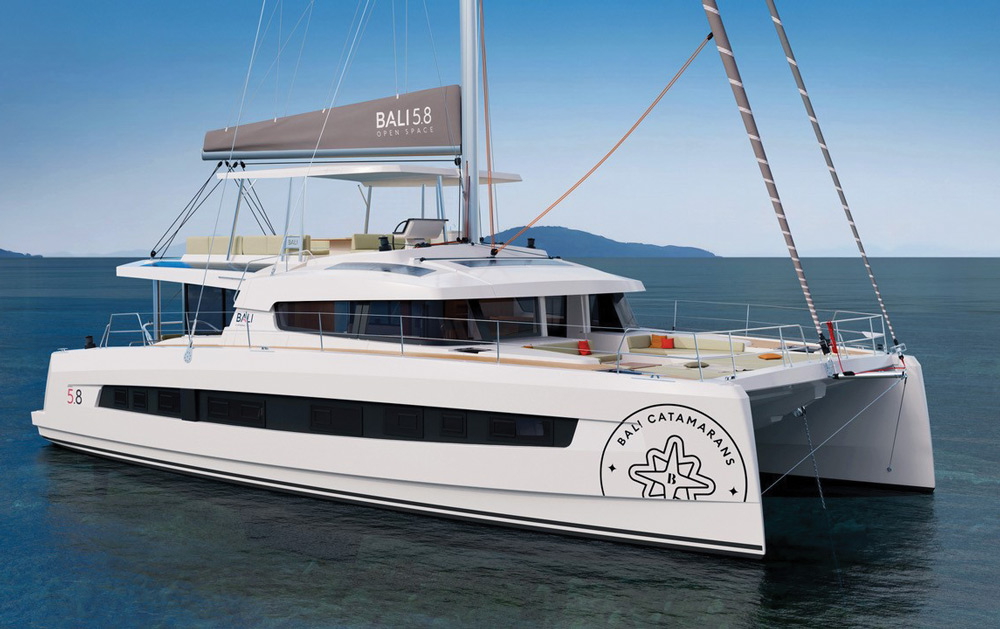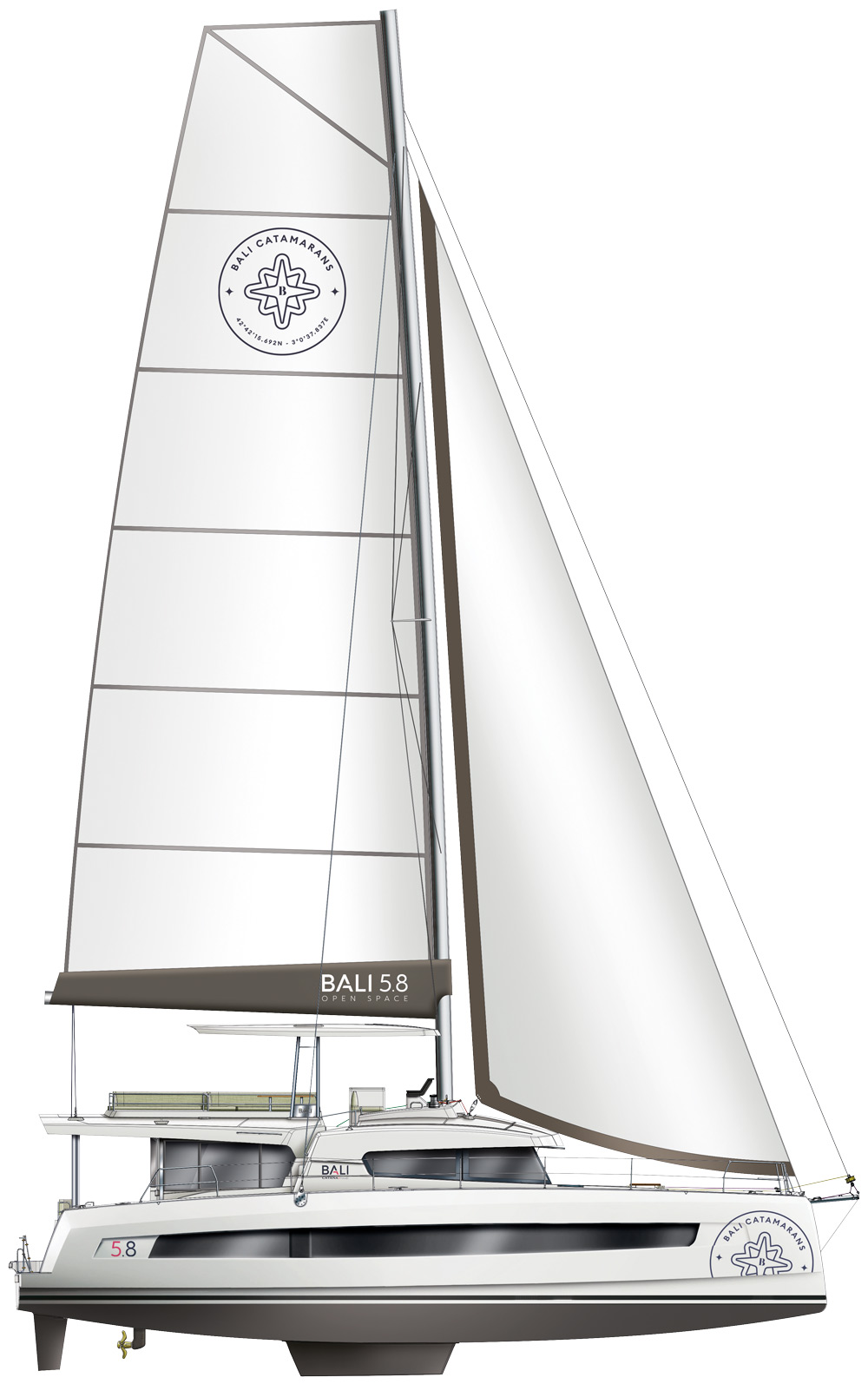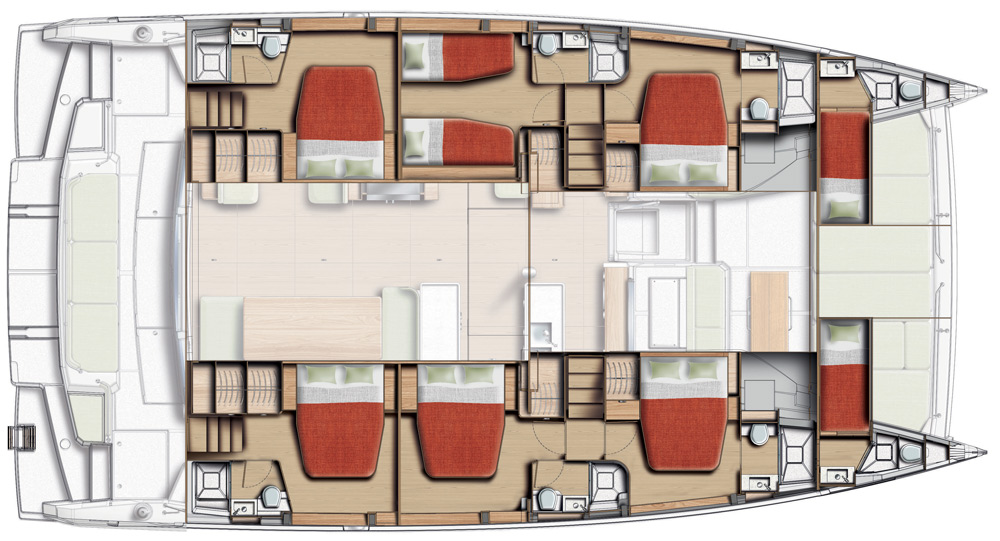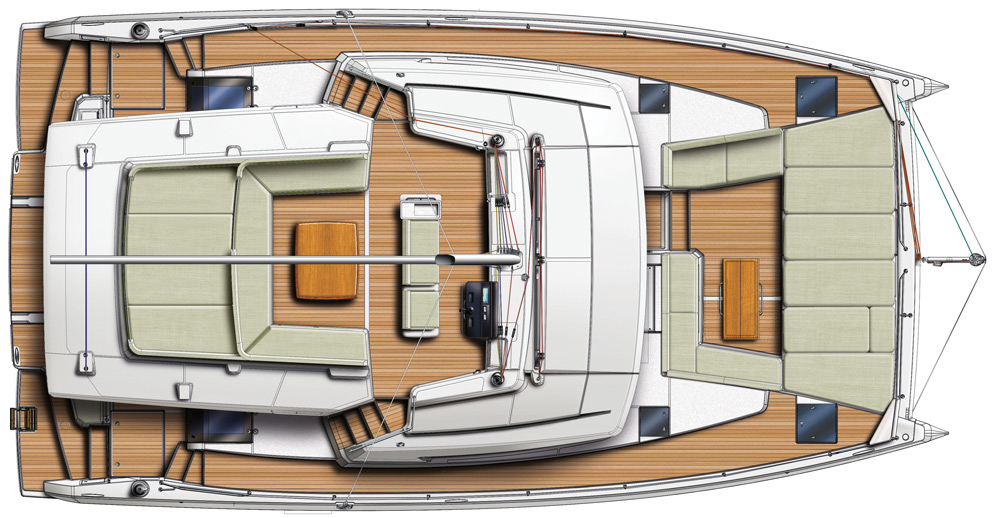Bali 5.8
This cruising cat’s palatial accommodations have sailors living in comfort
The Catana Group is launching its 14th Bali catamaran model, the 5.8, in conjunction with the 10th anniversary of the line. The promo blurb says “always bigger,” and I’m not going to argue with that. This is a very big 58-foot catamaran.
The catamaran is designed by Xavier Fay with interior design by Paiton Bercault. Whatever you ever wanted in 58 feet will certainly fit into this big cat.

Freeboard is hard to define. Given what appears to be the deck edge, freeboard of the hulls is close to 7 feet. That is a lot of freeboard. The bow is the typical reverse-hatchet type of bow, which is fashionable these days. If I consider the individual hulls as if they were the hull of a monohull, I get a L/B of approximately 6 for each hull.
I don’t have any sections, but the profile drawing seems to indicate a chine just below the deck edge, and another chine just above DWL. I think the upper chine is really just a crease to visually lower the freeboard, and the lower chine is positioned where it will optimize interior volume while reducing beam at the waterline.
The low-aspect-ratio fixed keel draws 4 feet, 10 inches and looks quite small to my eye, but we can assume optimizing performance is a focal point of this design.
Just for fun, I estimated the square footage of the boat at deck level. There appears to be about 1,583 square feet of living space. For comparison, that means this boat has about twice the deck area of a pickleball court’s 880 square feet. I bet that is the first time a yacht designer has used that calculation. Maybe we should define a new ratio, the DA/PC, the calculation showing how many pickleball courts will fit on the deck.

This layout will sleep 14 people. There are double-berth staterooms for six, each with an adjoining head, and these staterooms all provide access to the large berths from either side. Amidships to port there is another stateroom with twin single berths. Obviously, you could substitute a double berth in this same space. All of the heads have shower stalls.
If you go all the way forward in each hull there is a single berth crew cubbyhole with an adjoining head. We could consider this the basic layout for the interior.
If we go up to the deck level we have the main cabin including galley and nav station. The galley is plenty big enough, as is the nav station. Aft of the galley there is a U-shaped dinette to starboard and two reading chairs to port that I suppose could be configured as a single settee berth.
There is a door forward from the main cabin to a sunken area between the hulls where there are settees and another dining table. Are you still with me?
Now we can go up another level. The promotional material calls it the “flybridge,” aka the rooftop “everyone dreams of.” The promotional materials says this is “an essential space for watching, relaxing, sailing, partying and chatting.” All sail handling is done from the flybridge, forward of where the guests will be lounging or dining. A hard-top—aka bimini—covers the entire flybridge, providing UV protection and room for fully-integrated solar panels.
There is nothing unusual about the rig, other than the fact that the gooseneck of the main is 16 feet 5 inches above the DWL. There is a broad track for a self-tacking jib. There is a short fixed sprit that could be used for light air and off-the-wind sails. The promotional material lists “standard sail area” as 1,926 square feet, for an SA/D of 21.32, but if you use what I assume to be the optional square-top mainsail and a code 0, the additional 635 square feet of effective sail area would increase the SA/D to 28.34
This design is all about space—that is, volume—the goal being large parties enjoying good weather in palatial accommodations.
LOA 58’;Beam 29’8”; Draft 4’10”; Displ. 54,957 lb.; Sail area 1,926 sq. ft.; Auxiliary twin 80-hp; Fuel 317 gal.; Water 349 gal.; SA/D 21.32; D/L 127; L/B 1.95 www.bali-catamarans.com



Comments